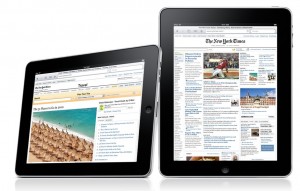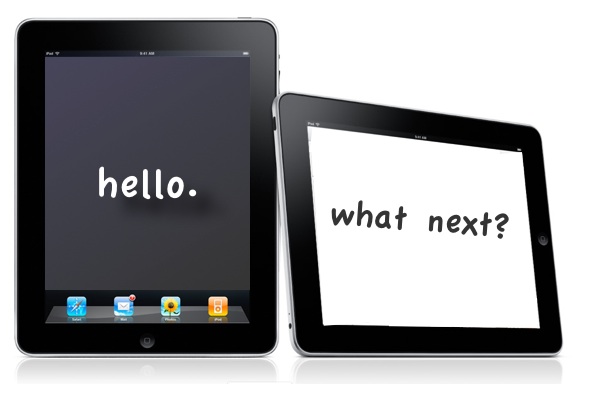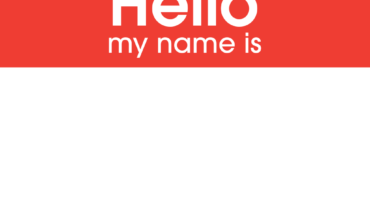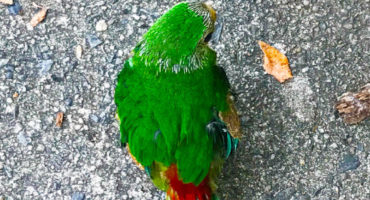Who will create the news experience?
New technology spawns new ways to tell stories. That’s the exciting part of Apple’s new tablet, an old idea whose time has apparently come.
Now comes the hard part: creating the content and designing the experience for the next wave of consumer devices that deliver our stories. We’re about to discover whether incumbent publishers and broadcasters can lead us into that world or whether a new, creative class of media designers and developers will replace them.
What to put on the screens that we’ll hold in our hands, stuff in our pockets, and pack in our briefcases and backpacks? A page from a book? A story from a newspaper? An index from a web site? Search results from Google and Bing? Icons from the iPhone? Short-message streams from social networks? Video games? Celebrity porn? Or something more?
The New York Times has spent the past three weeks developing an app for the iPad hat allows readers to save stories, view photos and play video. “We want to create the best of print and best of digital, all rolled into one,” said Times VP Martin Nisenholtz at today’s iPad unveiling. “We think we captured the essence of reading a newspaper,” added his colleague Jennifer Brook.
into one,” said Times VP Martin Nisenholtz at today’s iPad unveiling. “We think we captured the essence of reading a newspaper,” added his colleague Jennifer Brook.
Three whole weeks developing an app. Essence of reading of a newspaper. Be still my heart.
“Salvation (for Newspapers) Is At Hand,” writes Robert Wright, the Times’ new egg-head Opinionator for exclusive online commentary on culture, politics and world affairs. He suggests The Times will harvest additional revenue from people like him who’ll pay for news on online devices the way riders pay for trips in a taxi — on the meter.
Wright is so wrong: most consumers of news and information online aren’t like him. If we wanted a newspaper we’d buy one. The metaphor for storytelling is a good one for the stories produced by print journalists. Just don’t given us stories online that are produced for print and expect us to pay for them. Don’t give us talking heads on a video when we can make a more compelling one with a $100 Flip camcorder. Don’t assume that we can’t get other quality stories from a world of sources in a variety of formats and share them instantly with friends.
I’ve spent a good part of the past two decades evangelizing the need to design new storytelling metaphors and formats for the digital age. Now would be a good time to give it a go. As old formats decline before our eyes, publishers can barely restrain their enthusiasm for the iPad, the eReader or the next eSomething — more things on which to distribute their stories, more opportunities to charge.
This shapes up as another transformational moment for media. Unless content creators can develop differentiated, high value formats for their stories, I’m afraid the anticipated rewards from a new era of paying for discreet morsels of news will disappoint. Worse, enterprises that fail to adapt content to formats designed for interaction and social engagement will not only decline further, they will likely fail.
The race is on to design the news experience for the digital now as well as the digital future. It is an experience coming to the everywhere screens of daily life. Two decades of moving stories from one medium to the next hasn’t worked. It’s time to reinvent the news package, make it immersive and dynamic, provide social context, and include new layers and metaphors of knowledge, context and meaning. This will not only take time and investment, but creativity and imagination. A devotion to compelling storytelling is at the heart of it.
We have the tools to make stories soar across media. Journalists, developers and designers could lead a renaissance for experiencing news in the connected society rather than participating in the decline of news formats that are becoming irrelevant.
Stay tuned. I’ll talk about experiential design at this year’s We Media conference. Meantime, I’ll post stories from the front and showcase breakthrough examples that might be applied to a news experience for tablets and other devices. Please send me examples that you recommend.
For starters, a few creative examples follow. Click and through for the full experience. See:
Jonathan Harris is an artist/designer/technologist who is pioneering new metaphors for storytelling that are original, immersive and multi-sensory.
We Feel Fine is an in-depth exploration of human feelings, http://www.wefeelfine.org/
Sputnik Observatory documents contemporary culture through video interviews. It is based on the premise that that everything is connected to everything else.
The Whale Hunt is an experiment in human storytelling that enables readers to participate and see through multiple perspectives, concepts, context and cadence.
Journey to Zero is a collaborate journey on the future of mobility guided by Richard Saul Wurman.
For a more familiar metaphor developed for the tablet, see the wonderfactory’s prototype for Sports Illustrated. www.thewonderfactory.com It’s best experienced through the video on their site.
Also Flyp magazine, which uses an innovative palette of online tools and Web 2.0 user functionality to provide an engaging and enriching multimedia experience.




